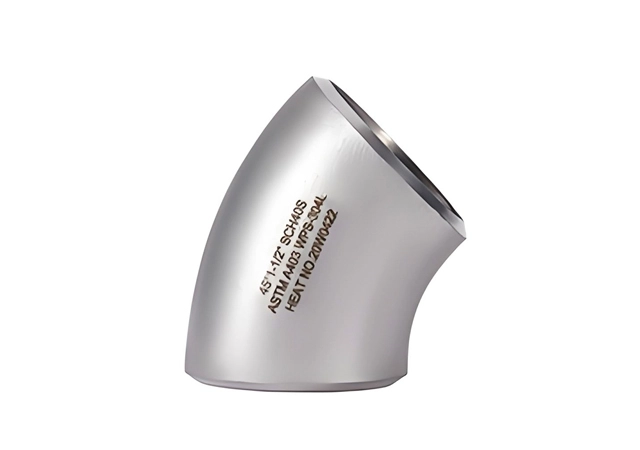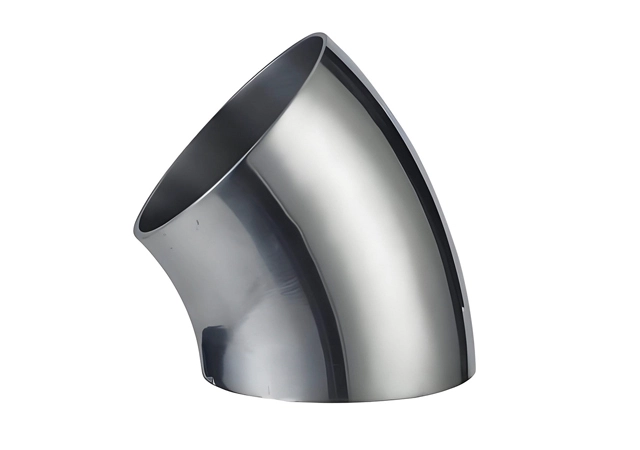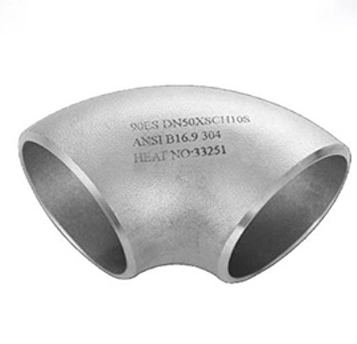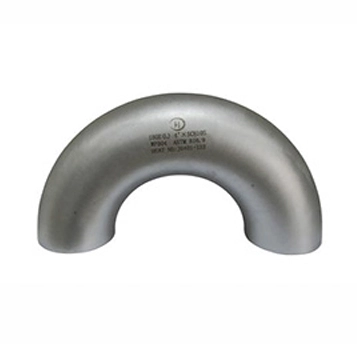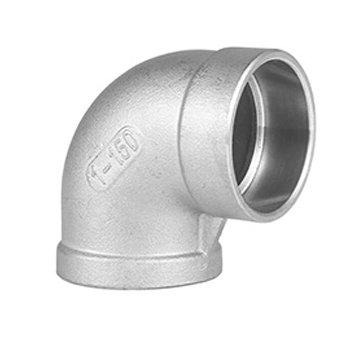A 45-degree elbow is a type of pipe fitting used to change the direction of flow in a piping system by 45 degrees. It is commonly used when a less abrupt change in direction is required compared to a 90-degree elbow.
The 45-degree elbow allows for a smoother transition in the flow path, reducing pressure drop and turbulence, which makes it ideal for applications where fluid efficiency is critical.
Angle:Changes the direction of flow by 45 degrees.
Connection Types:Available in various connection types, including threaded, socket weld, butt weld, and flanged.
Materials:Made from materials like carbon steel, stainless steel, or copper, depending on the application.
Size:Available in a wide range of sizes, from small diameters (e.g., 1/2 inch) to large diameters (e.g., 48 inches or more).
Radius:Comes in two main types based on the curvature:
Long Radius (LR) Elbow: Has a larger curve, resulting in less pressure drop and smoother flow.
Short Radius (SR) Elbow: Has a tighter curve, suitable for tight spaces but may cause higher pressure drop.
Threaded 45-Degree Elbow:
Has threaded ends for screwing onto pipes.
Commonly used in low-pressure systems like plumbing.
Socket Weld 45-Degree Elbow:
Pipes are inserted into the fitting and welded for a strong connection.
Used in high-pressure systems.
Butt Weld 45-Degree Elbow:
Pipes and fittings are welded together end-to-end.
Ideal for high-pressure and high-temperature applications.
Flanged 45-Degree Elbow:
Has flanged ends for bolted connections.
Used in systems requiring frequent disassembly.
Long Radius (LR) 45-Degree Elbow:
The centerline radius is 1.5 times the pipe diameter.
Provides smoother flow and less pressure drop.
Short Radius (SR) 45-Degree Elbow:
The centerline radius is equal to the pipe diameter.
Suitable for tight spaces but may cause higher turbulence.
1. Smoother Flow:Provides a gentler change in direction, reducing pressure drop and turbulence compared to 90-degree elbows.
2. Space Optimization:Allows pipes to make gradual turns, saving space in piping systems.
3. Versatility:Available in various materials, sizes, and connection types to suit different applications.
4. Durability:Made from robust materials to withstand high pressure, temperature, and corrosion.
Space Requirements:Long-radius elbows require more space for installation.
Cost:Specialty materials (e.g., stainless steel) or larger sizes can be expensive.

 EN
EN
